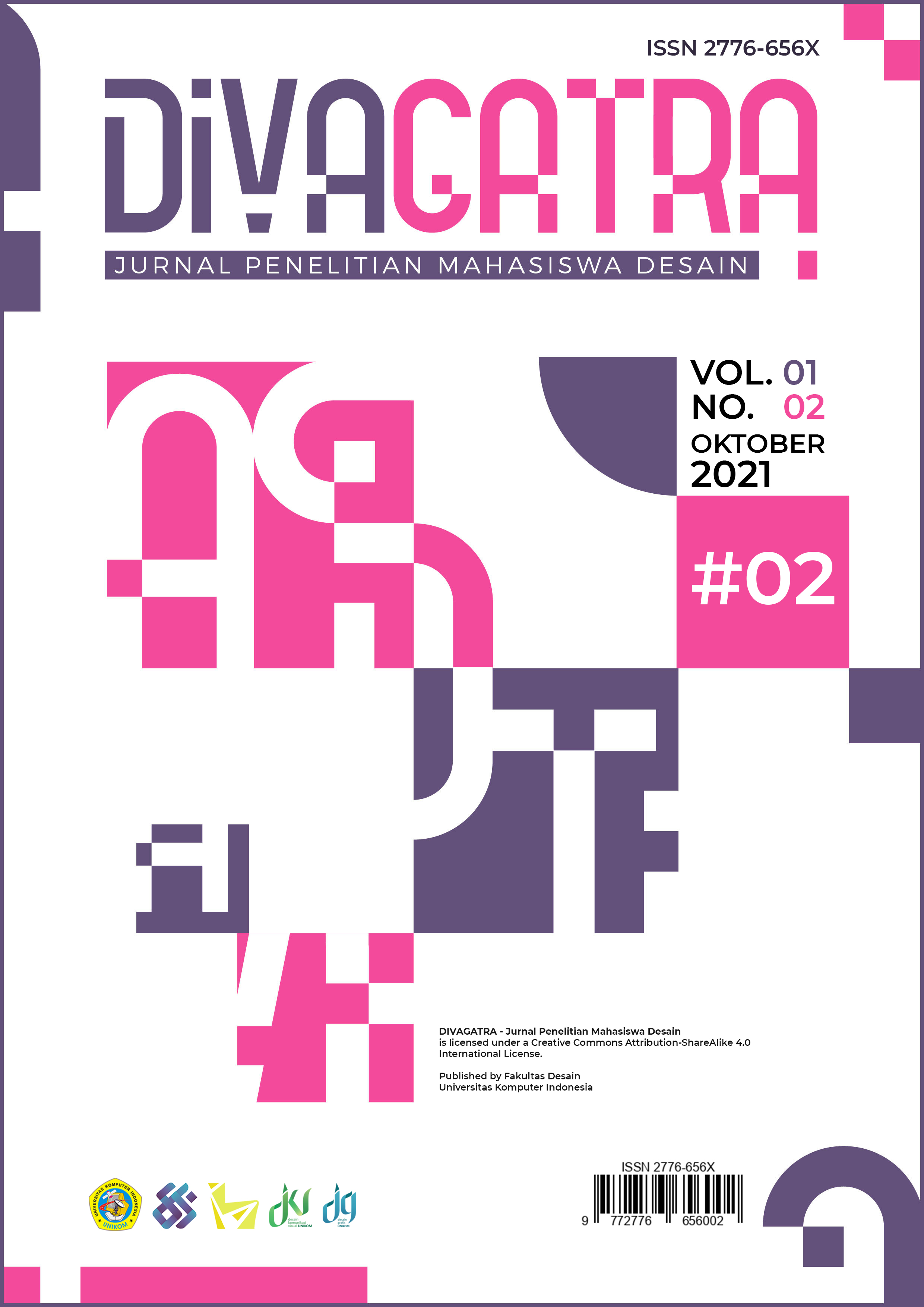Desain Ilustrasi Tokoh Suryaputra Karna Mahabharata
Main Article Content
Abstract
The positive values of life are embodied in culture and literary works that contain life values and also knowledge that has an influence on human life until now. Mahabharata is one of two ancient literary works originating from India, apart from Ramayana, as for several versions of this Mahabharata story. Mahabharata tells the story of the conflicts of the five Pandavas with Pandawa cousins namely 100 Kauravas, regarding the dispute over the rights of the Hasstinapura court government. Suryaputra Karna is one of the knights in the Mahabharata story and plays an important role in the storyline. The meaning of life that can be taken very much in the journey of life Karna, this design describes the meaning of heroism owned by Suryaputra Karna in the Mahabharata story. The conclusion obtained from this design, tells Karna's journey through many trials, slanders, and others that ultimately show the value of the character owned by Karna as an antagonist who can become a better figure and save or solve existing problems. The importance of the purpose of this design aims to preserve Karna characters and folklore that can be adapted into other media and can be easily accepted by teenagers today.
Article Details
Section
![]()
Authors who publish articles in DIVAGATRA agree to the following terms:
- Authors retain the copyright of the article and grant the journal right of first publication with the work simultaneously licensed under CC-BY-SA or The Creative Commons Attribution–ShareAlike License.
- Authors can enter into separate, additional contractual arrangements for the non-exclusive distribution of the journal's published version of the work (e.g., post it to an institutional repository or publish it in a book), with an acknowledgment of its initial publication in this journal.
- Authors are permitted and encouraged to post their work online (e.g., in institutional repositories or on their website) before and during the submission process, as it can lead to productive exchanges, as well as earlier and greater citation of published work (See The Effect of Open Access).
How to Cite
References
Alwisol (2019) Psikologi Kepribadian Edisi Revisi (Original). UMM Press. ISBN: 9789797960674 Bank.
Ambrose, G., & Harris, P. (2005). Basics design 03: Typography. AVA Publishing.
Boggs, J. M. (1992). Cara Menilai Sebuah Film (Diterjemahkan oleh Asrul Sani). Jakarta: Yayasan Citra.
Endaswara, S. (2009). Metodologi Penelitian Folklor. Yogyakarta: Medpress.
Jefkins, F. (1996). Periklanan. Terjemahan oleh Haris Munandar. 1997. Jakarta: Airlangga.
Mangguali, S., Martono, M., & Sanulita, H. (2014). Nilai Budaya dan Kepahlawanan dalam Cerita Rakyat Dayak Kanayatn pada Buku Muatan Lokal Landak 2007. Jurnal Pendidikan dan Pembelajaran, 3(1).
Santrock, J. W. (2003). Adolescence: Perkembangan Remaja. (Shinto B. Adelar, Trans). Jakarta: Erlangga.
Sanyal, S. (2015). Marginalized yet Empowered: A Study of Ekalavya and Karna from Mahabharata. International Journal of English. Department of English, University of Delhi.
Shekhar, A. (2011). Theories of Personality and Personality Testing.
Sihombing, D. (2001). Tipografi dalam desain grafis. Gramedia Pustaka Utama.
Soedarso, S. P. (1990). Tinjauan seni. Yogyakarta. Suku Dayar Sana.
Vaughan, T. (2011). Multimedia: Making It Work 8th Edition. McGraw-Hill.
Wilkins, W. J., & Wilkins, W. J. (1913). Hindu mythology. Thacker, Spink.

